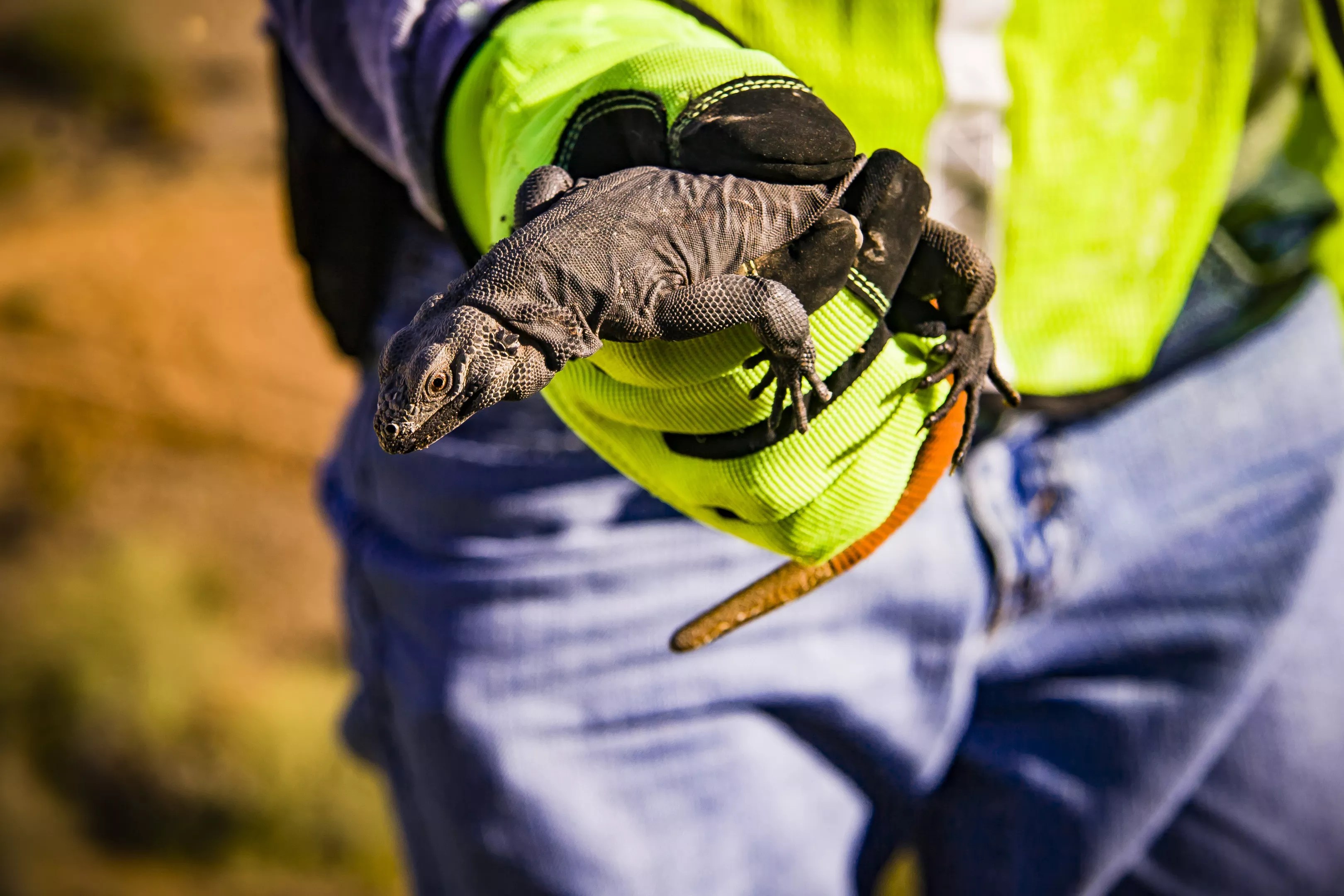
Arizona Department of Transportation

Audio By Carbonatix
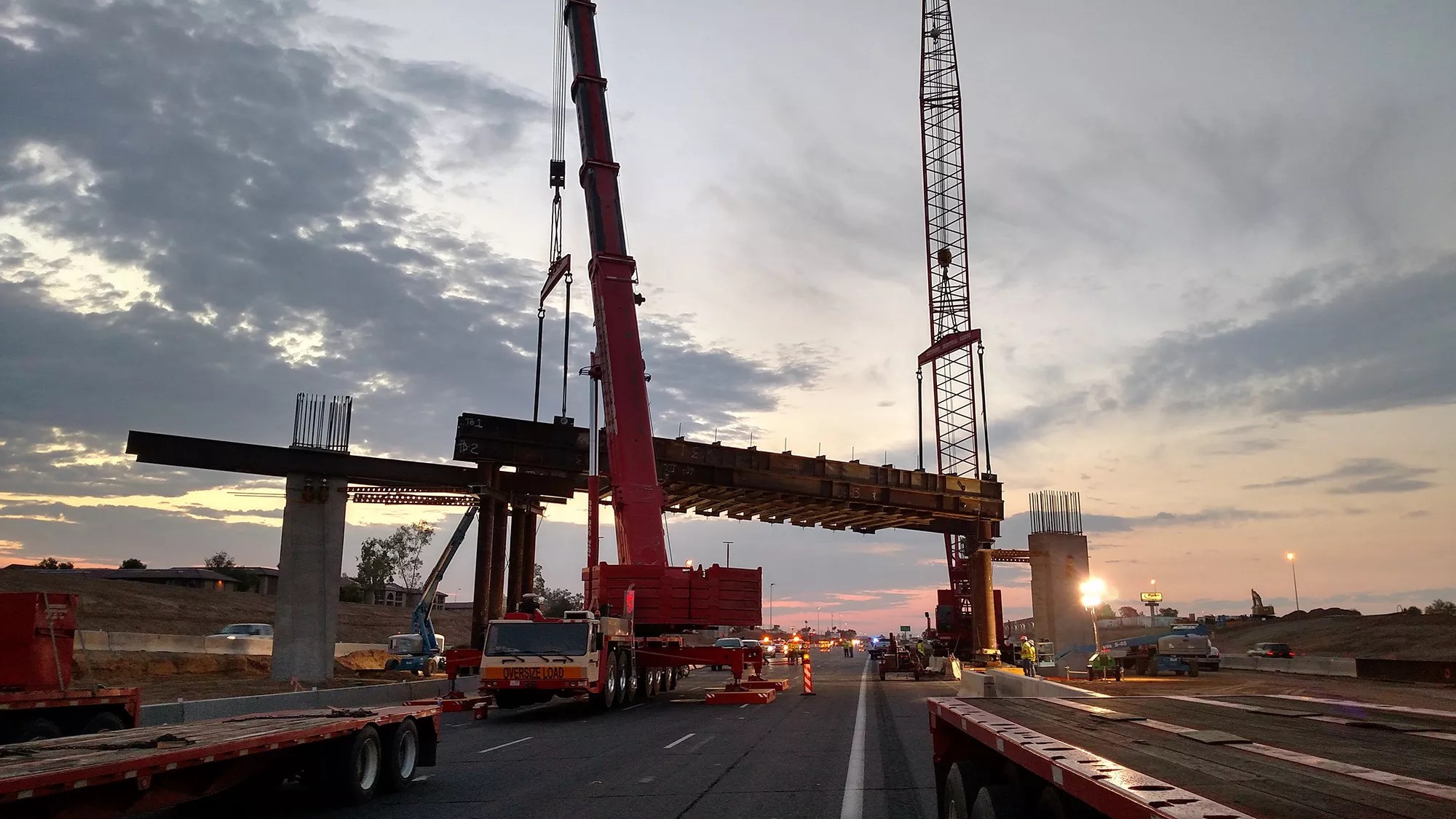
ADOT closes parts of Interstate 10 west of downtown Phoenix to build an interchange with the future South Mountain Freeway.
Arizona Department of Transportation
Valley motorists have experienced night closures on Interstate 10 west of downtown Phoenix, and have seen freeway interchanges taking shape.
In the rural Laveen area, residents have witnessed pilings driven into the Salt River and the beginnings of bridges forming.
These are the visible signs that the Arizona Department of Transportation is moving forward with its largest-ever project, the construction of the controversial, eight-lane, $1.8 billion South Mountain Freeway.
Far from view, in fact 750 miles away in San Francisco, perhaps the most significant action took place last week to make the opening of a reliever route to congested I-10 a reality in late 2019.
On December 8, the U.S. Ninth Circuit Court of Appeals sided with highway planners, ruling they did not violate federal environmental laws when they approved the South Mountain Freeway. The court affirmed a previous ruling at the U.S. District Court in Arizona.
“This is a clear victory for one of the nation’s fastest-growing regions, ensuring that progress will continue on a project that will make this a better place to live and do business,” ADOT Director John Halikowski said in a press release after the ruling.
Five times previously, a coalition of environmentalists and members of the Gila River Indian Community have sued to block construction of the 22-mile extension of Loop 202 through Ahwatukee and Laveen. Five times courts ruled against them.
Now it’s six.
To understand why the appellate court ruling is a big deal, you have to understand something of the history and scope of the South Mountain Freeway.
The Maricopa Association of Governments first planned the route in the mid-1980s.
Plans were made and money found. ADOT bought scores of homes and properties for the right of way in Ahwatukee and permitted people to stay until construction came.
Money ran out, plans were drafted anew, and politics intervened. A two-decade debate dragged on over whether the freeway should be moved onto the tribal land, stay where it is, or be scrapped entirely.
Ahwatukee homeowners and renters said it was unfair to keep them in limbo for decades. Some members of the Gila River tribe said it was unfair for the state, again, to foist the negative effects of a freeway onto them. Others in the tribe said if a freeway was to go in, they should benefit by building it on their land and letting them develop alongside it. Business leaders said the freeway was imperative for the health of the local economy.
On and on it dragged. After the Federal Highway Administration made the final decision to proceed, the lawsuits came.
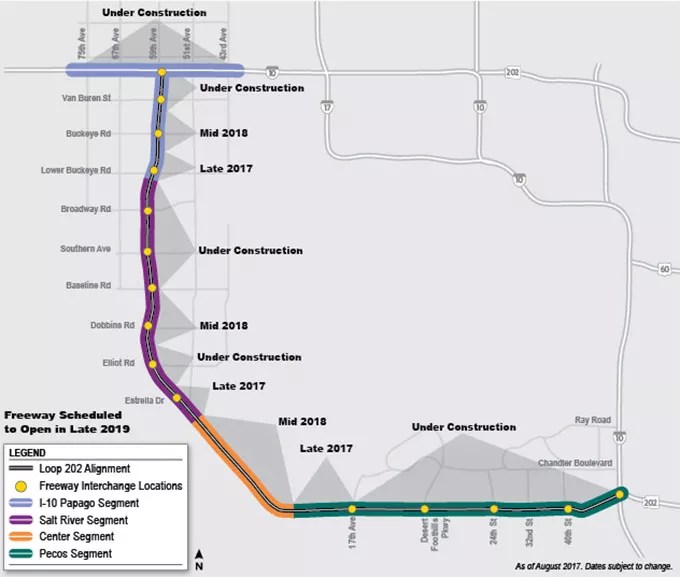
The route and construction schedule for the South Mountain Freeway.
Arizona Department of Transportation
And while opponents can still appeal this month’s ruling, they face an uphill challenge to get another hearing, let alone have the decision reversed.
When the $21 million environmental review was released, not everyone shared that assessment. Critics of the program picked holes in it, and many neutrals thought it was a slick and readable document, but a shallow one.
For decades, these four key issues dogged the proposed freeway:
• It would cut through low hills on the edge of South Mountain Park Preserve, and other routes would offer better, less destructive options.
• It would barricade animal migration routes from the mountain to the plains on the Gila River land below to the south.
• It would unnecessarily spew toxic gases into the air and endanger the health of vulnerable groups nearby, particularly children.
• It would disturb sacred Native American sites, including the South Mountain parkland itself.
At the heart of the environmental controversy lay the central finding by MAG, the Arizona Department of Transportation, its environmental consultants, and ultimately the Federal Highway Administration that blessed the project. All agreed there were only two choices: the freeway as envisioned or no freeway at all. It was impractical to build it anywhere else and by not building it, congestion would grow as the population grew and the air quality would get worse.
The Ninth Circuit Court of Appeals was unimpressed with the reasoning of freeway opponents.
“Because appellees explained the basis for their decision to rely on the socioeconomic projections of the MAG report and disclosed their reliance on the projections, we conclude that their explanation of the no-action alternative was not arbitrary or capricious,” the court ruled.
Judges concluded that the environmental study complied with federal environmental laws.
They found that the study of alternatives was “permissible,” because other options didn’t meet the goals of a new freeway: to move people from homes on the west side to jobs in the southeast Valley and to divert traffic away from the bottleneck through downtown Phoenix.
Judges said ADOT had adequately planned for helping the flow of wildlife, by designing special bridges and culverts to help them over or under the South Mountain Freeway.
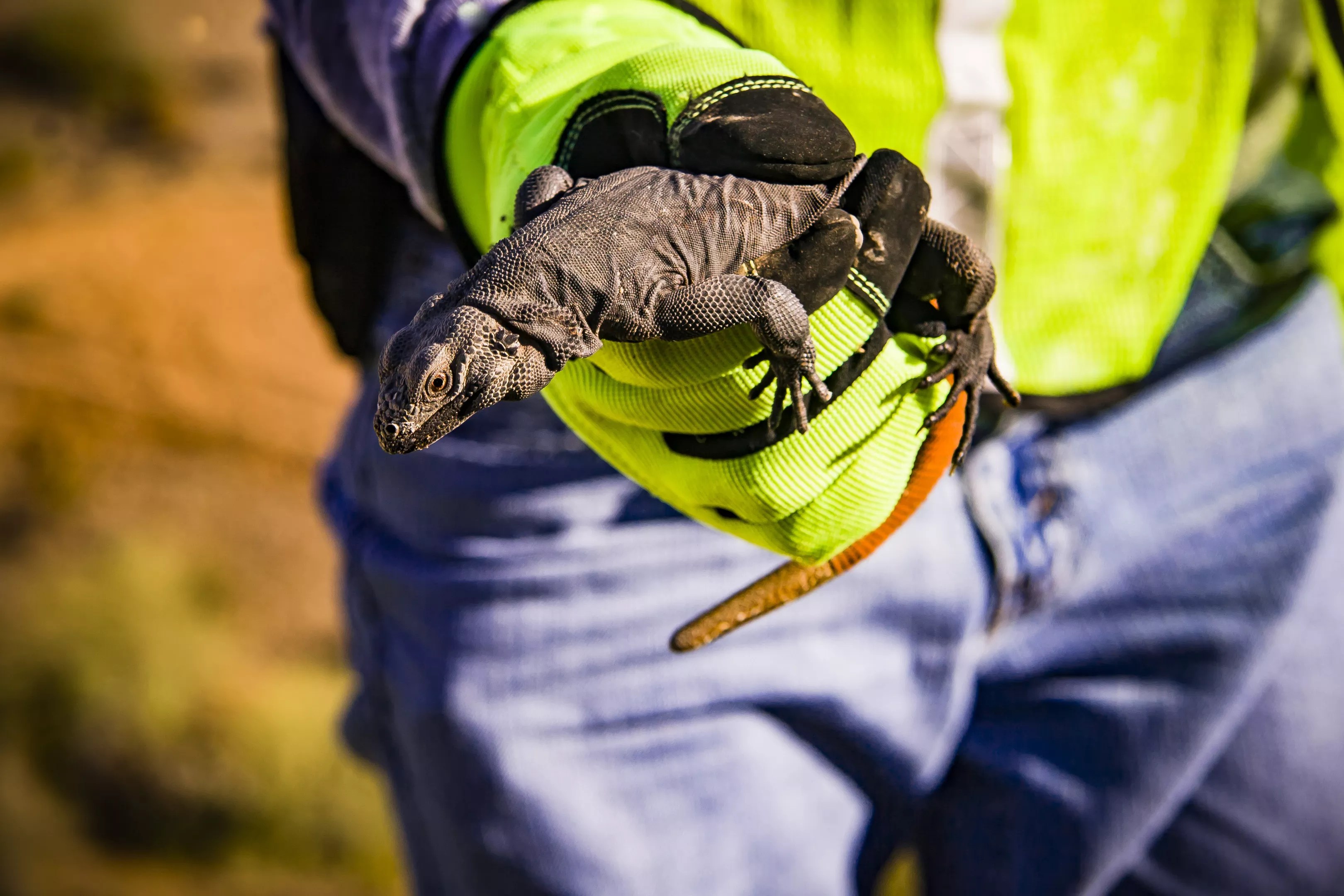
ADOT teams tag, measure and relocate a chuckwalla as part of the South Mountain Freeway project.
Arizona Department of Transportation
They reasoned that ADOT’s plan to consult with tribal members and fence of sensitive cultural sites was a reasonable effort to protect those sites. This, even though many, but not all, local tribal members consider the entire mountain sacred.
One of the sharpest controversies was over the necessity to blast a 200-foot deep notch in a hillside near the Vee Quiva casino. Though judges didn’t address it specifically, ADOT has long pointed out that only 31 acres of a 16,600-acre park would be disturbed. To many, one acre was too many.
During numerous public hearings, local activists turned out in numbers to contest ADOT’s findings on air quality. They brought scientists to explain recent studies, particularly from Las Vegas, which suggested the threat of carbon monoxide and particulates at schools was more dangerous than widely thought.
Judges, though, ruled planners had “adequately considered the proposed freeway’s potential impact on children’s health.”
“We give deference to an agency’s judgment when the agency undertakes technical scientific analysis,” the court found.
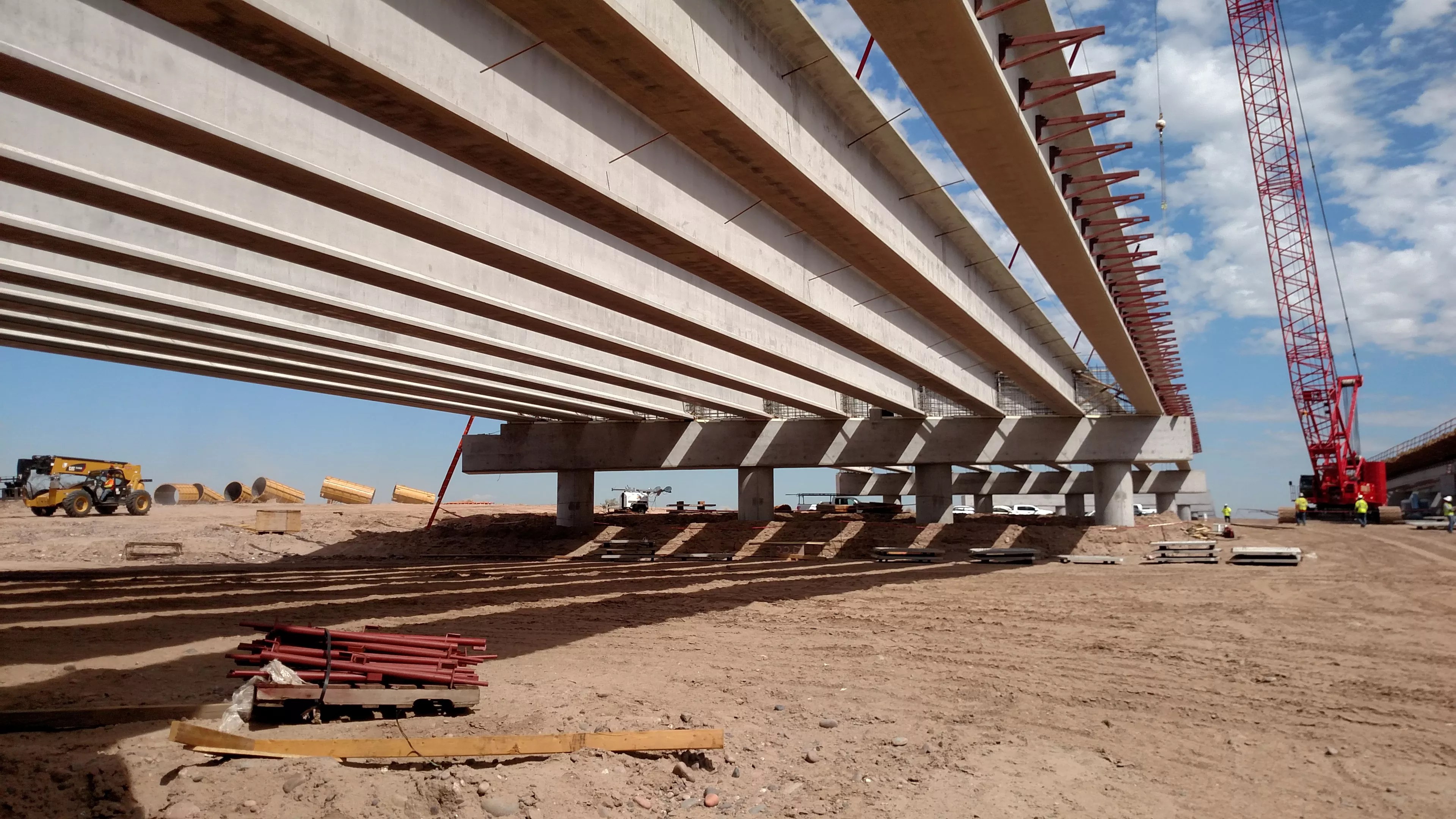
ADOT is building bridges over Salt River near Laveen as part of the South Mountain Freeway project.
Arizona Department of Transportation
ADOT claimed victory.
“ADOT has worked closely with the city of Phoenix, the Maricopa Association of Governments and Federal Highway Administration to develop the most extensive environmental review of any highway project to date in Arizona, and the courts have taken notice of this by ruling in favor of this project at every step,” Halikowski said.